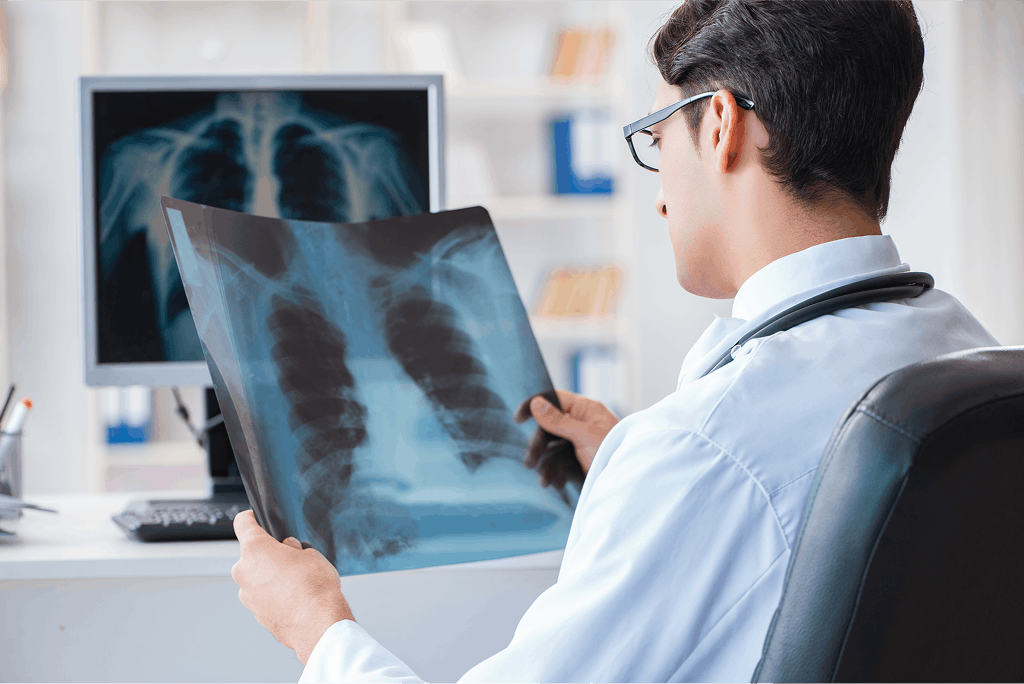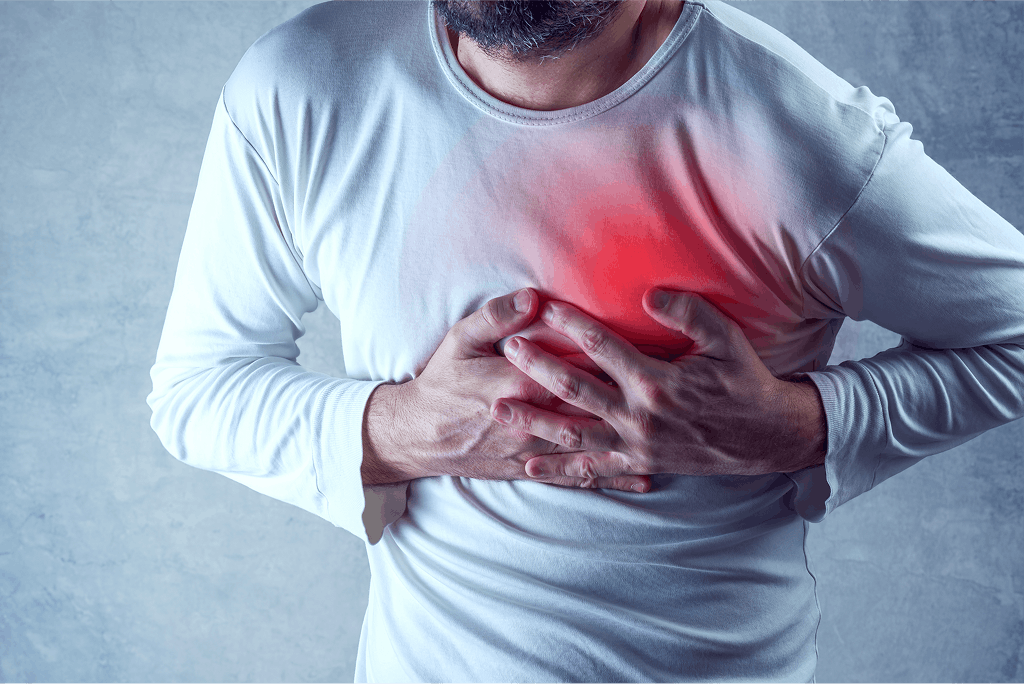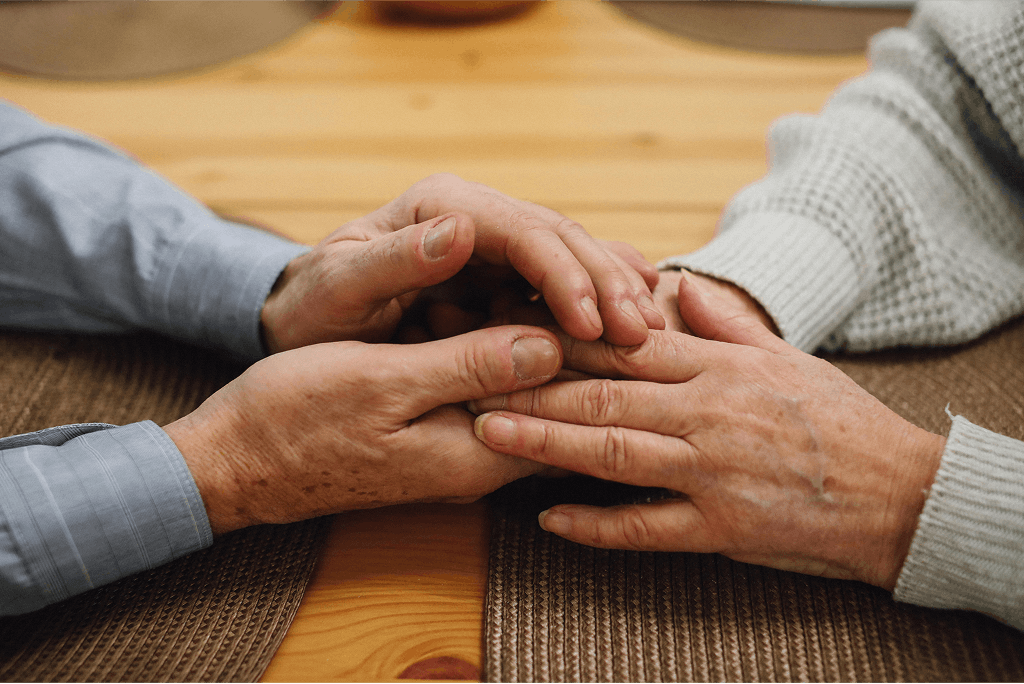ಹರ್ಪಿಸ್ ಜೋಸ್ಟರ್ (ಶಿಂಗಲ್ಸ್) ಕಾರಣಗಳನ್ನು ತಿಳಿದುಕೊಳ್ಳುವುದು
.png?auto=format)
ಕಾಲ್ಪನಿಕ ಚಿತ್ರ, ಉದಾಹರಣೆಯ ಉದ್ದೇಶಗಳಿಗಾಗಿ ಮಾತ್ರ
ಹರ್ಪಿಸ್ ಜೋಸ್ಟರ್, ಸಾಮಾನ್ಯವಾಗಿ ಶಿಂಗಲ್ಸ್ ಎಂದು ಕರೆಯಲ್ಪಡುತ್ತದೆ, ಇದು ಅಸಹನೀಯ ನೋವಿನಿಂದ ಕೂಡಿದ ವೈರಲ್ ಸೋಂಕಾಗಿದ್ದು, ಇದು ವ್ಯಕ್ತಿಯ ಜೀವನದ ಗುಣಮಟ್ಟದ ಮೇಲೆ ಗಮನಾರ್ಹವಾಗಿ ಪರಿಣಾಮ ಬೀರುತ್ತದೆ 1#. ಈ ದುರ್ಬಲಗೊಳಿಸುವ ಸ್ಥಿತಿಯು ನಿದ್ರೆ, ಕೆಲಸ ಮತ್ತು ವೈಯಕ್ತಿಕ ಸಂಬಂಧಗಳನ್ನು ಅಡ್ಡಿಪಡಿಸುತ್ತದೆ, ಇದು ದೈಹಿಕ ಅಸ್ವಸ್ಥತೆ ಮತ್ತು ಭಾವನಾತ್ಮಕ ಯಾತನೆಗೆ ಕಾರಣವಾಗುತ್ತದೆ 1.
ನೋವಿನಿಂದ ಕೂಡಿದ, ಕೆಂಪು ದದ್ದುಗಳ ವಿಶಿಷ್ಟ ಲಕ್ಷಣಗಳ ಬಗ್ಗೆ ಅನೇಕರಿಗೆ ಪರಿಚಿತವಾಗಿದ್ದರೂ, ಈ ಸ್ಥಿತಿಗೆ ಸಂಬಂಧಿಸಿದ ಮೂಲ ಕಾರಣಗಳು ಮತ್ತು ಅಪಾಯಕಾರಿ ಅಂಶಗಳನ್ನು ಹೆಚ್ಚಾಗಿ ತಪ್ಪಾಗಿ ಅರ್ಥೈಸಲಾಗುತ್ತದೆ.
ಹರ್ಪಿಸ್ ಜೋಸ್ಟರ್ ಖಾಯಿಲೆಯ ಕಾರಣಗಳು, ಲಕ್ಷಣಗಳು ಮತ್ತು ತಡೆಗಟ್ಟುವಿಕೆಯನ್ನು ಚೆನ್ನಾಗಿ ಅರ್ಥಮಾಡಿಕೊಳ್ಳಲು ಅದರ ಸಂಕೀರ್ಣತೆಗಳನ್ನು ಅನ್ವೇಷಿಸೋಣ.
ಹರ್ಪಿಸ್ ಜೋಸ್ಟರ್ (ಶಿಂಗಲ್ಸ್) ಅನ್ನು ಒಂದು ಖಾಯಿಲೆಯಾಗಿ ಅರ್ಥಮಾಡಿಕೊಳ್ಳುವುದು
ಹರ್ಪಿಸ್ ಜೋಸ್ಟರ್ (ಶಿಂಗಲ್ಸ್) ಒಂದು ನೋವಿನ ವೈರಲ್ ಖಾಯಿಲೆಯಾಗಿದ್ದು, ಇದು ವರಿಸೆಲ್ಲಾ-ಜೋಸ್ಟರ್ ವೈರಸ್ನ ಪುನಃ ಸಕ್ರಿಯಗೊಳಿಸುವಿಕೆಯಿಂದ ಉಂಟಾಗುತ್ತದೆ, ಇದು ಚಿಕನ್ಪಾಕ್ಸ್ ಗೆ ಕಾರಣವಾಗುವ ವೈರಸ್ ಆಗಿದೆ 2#. ಒಬ್ಬ ವ್ಯಕ್ತಿಗೆ ಸಿಡುಬು ಬಂದ ನಂತರ, ವೈರಸ್ ನರಮಂಡಲದಲ್ಲಿ ಸುಪ್ತ ಅಥವಾ ನಿಷ್ಕ್ರಿಯವಾಗಿರುತ್ತದೆ. ಇದು ವರ್ಷಗಳ ನಂತರ ಪುನಃ ಸಕ್ರಿಯಗೊಳ್ಳಬಹುದು, ಇದು ನೋವಿನಿಂದ ಕೂಡಿದ ಕೆಂಪು ದದ್ದಿಗೆ ಕಾರಣವಾಗುತ್ತದೆ2#.
ಹರ್ಪಿಸ್ ಜೋಸ್ಟರ್ ದದ್ದು ಸಾಮಾನ್ಯವಾಗಿ ಮುಂಡದ ಎಡ ಅಥವಾ ಬಲಭಾಗದಲ್ಲಿ ಅಥವಾ ದೇಹದ ಇತರ ಭಾಗಗಳಲ್ಲಿ ಒಂದೇ, ಗುಳ್ಳೆಗಳ ಪಟ್ಟಿಯಂತೆ ಕಾಣಿಸಿಕೊಳ್ಳುತ್ತದೆ. ಈ ದದ್ದು ಸಾಮಾನ್ಯವಾಗಿ 2 ರಿಂದ 4 ವಾರಗಳಲ್ಲಿ ಗುಣವಾಗುತ್ತದೆ 3.
ಸರಿಸುಮಾರು 3 ರಲ್ಲಿ 1 ವ್ಯಕ್ತಿಗಳು ತಮ್ಮ ಜೀವನದ ಒಂದು ಹಂತದಲ್ಲಿ ಹರ್ಪಿಸ್ ಜೋಸ್ಟರ್ ಅನ್ನು ಅನುಭವಿಸಬಹುದು 4.
ಹರ್ಪಿಸ್ ಜೋಸ್ಟರ್ನ ಅಪಾಯಗಳು ಮತ್ತು ಕಾರಣಗಳು ಯಾವುವು?
ವರಿಸೆಲ್ಲಾ-ಜೋಸ್ಟರ್ ವೈರಸ್ ಹರ್ಪಿಸ್ ಜೋಸ್ಟರ್ ಖಾಯಿಲೆಗೆ ಕಾರಣವಾಗಿದೆ ಮತ್ತು ಸಿಡುಬಿಗೆ(ವರಿಸೆಲ್ಲಾ) ಕಾರಣವಾಗುವ ವೈರಸ್ ಆಗಿದೆ 2. ಸಿಡುಬು ಸಾಮಾನ್ಯವಾಗಿ ಬಾಲ್ಯದಲ್ಲಿ ಪ್ರಾಥಮಿಕ ವರಿಸೆಲ್ಲಾ-ಜೋಸ್ಟರ್ ವೈರಸ್ ಸೋಂಕಿನಂತೆ ಕಂಡುಬರುತ್ತದೆ 5. ಇದು ತುರಿಕೆ ದದ್ದುಗಳಂತೆ ಕಾಣಿಸಿಕೊಳ್ಳುತ್ತದೆ, ಇದು ಸಣ್ಣ ಉಬ್ಬುಗಳು ಮತ್ತು ಗುಳ್ಳೆಗಳೊಂದಿಗೆ ಪ್ರಾರಂಭವಾಗುತ್ತದೆ, ಅಂತಿಮವಾಗಿ 7 ರಿಂದ 10 ದಿನಗಳಲ್ಲಿ ಒಣಗಿದ ಹಕ್ಕಳೆಗಳನ್ನು ರೂಪಿಸುತ್ತದೆ. ನೀವು ಸಿಡುಬು ಹೊಂದಿದ್ದರೆ, ವೈರಸ್ ನಿಮ್ಮ ದೇಹದಲ್ಲಿ ಪುನಃ ಸಕ್ರಿಯಗೊಳ್ಳಬಹುದು, ಇದು ಸರ್ಪಸುತ್ತಿಗೆ ಕಾರಣವಾಗುತ್ತದೆ 2.
ವರಿಸೆಲ್ಲಾ-ಜೋಸ್ಟರ್ ವೈರಸ್ ಪುನಃ ಸಕ್ರಿಯಗೊಳ್ಳಲು ನಿಖರವಾದ ಕಾರಣವನ್ನು ಸಂಪೂರ್ಣವಾಗಿ ಅರ್ಥಮಾಡಿಕೊಳ್ಳಲಾಗಿಲ್ಲ, ಆದರೆ ಇದು ವೈರಸ್ಗೆ ನಿರ್ದಿಷ್ಟವಾದ ಜೀವಕೋಶ-ಮಧ್ಯಸ್ಥಿಕೆಯ ರೋಗನಿರೋಧಕ ಶಕ್ತಿಯ ಕುಸಿತಕ್ಕೆ ಸಂಬಂಧಿಸಿದೆ ಎಂದು ನಂಬಲಾಗಿದೆ6. ಈ ಕುಸಿತವು ವಯಸ್ಸಾದಂತೆ ಅಥವಾ ರೋಗನಿರೋಧಕ ವ್ಯವಸ್ಥೆಯನ್ನು ದುರ್ಬಲಗೊಳಿಸುವ ಕೆಲವು ವೈದ್ಯಕೀಯ ಪರಿಸ್ಥಿತಿಗಳಿಂದಾಗಿ ಸ್ವಾಭಾವಿಕವಾಗಿ ಸಂಭವಿಸಬಹುದು.
ಹರ್ಪಿಸ್ ಜೋಸ್ಟರ್ಗೆ ಕಾರಣವಾಗುವ ಸಂಭಾವ್ಯ ಅಂಶಗಳು:
- ಹಿಂದಿನ ಸಿಡುಬಿನ ಸೋಂಕು: ಸಿಡುಬು ಹೊಂದಿದ್ದ ಯಾವುದೇ ವ್ಯಕ್ತಿ ನಂತರದ ಜೀವನದಲ್ಲಿ ಶಿಂಗಲ್ಸ್ಗೆ ಒಳಗಾಗುವ ಅಪಾಯದಲ್ಲಿರುತ್ತಾರೆ 2.
- ವಯಸ್ಸು: ಹರ್ಪಿಸ್ ಜೋಸ್ಟರ್ ಖಾಯಿಲೆಯ ಅಪಾಯವು ವಯಸ್ಸಿನೊಂದಿಗೆ ಗಮನಾರ್ಹವಾಗಿ ಹೆಚ್ಚಾಗುತ್ತದೆ. 50 ವರ್ಷ ಮತ್ತು ಅದಕ್ಕಿಂತ ಹೆಚ್ಚಿನ ವಯಸ್ಸಿನ ಜನರು ಈ ಸ್ಥಿತಿಯನ್ನು ಬೆಳೆಸಿಕೊಳ್ಳುವ ಸಾಧ್ಯತೆಯಿದೆ 4, 50 ವರ್ಷಕ್ಕಿಂತ ಮೇಲ್ಪಟ್ಟ ವಯಸ್ಕರಲ್ಲಿ 90% ರಷ್ಟು ಜನರು ವೈರಸ್ ಅನ್ನು ಹೊತ್ತೊಯ್ಯುತ್ತಾರೆ 7. ವಯಸ್ಸಾದಂತೆ ರೋಗನಿರೋಧಕ ಶಕ್ತಿ ದುರ್ಬಲಗೊಳ್ಳುತ್ತದೆ8, ವೈರಸ್ ಪುನಃ ಸಕ್ರಿಯಗೊಳ್ಳುತ್ತದೆ ಮತ್ತು ಹರ್ಪಿಸ್ ಜೋಸ್ಟರ್ಗೆ ಕಾರಣವಾಗಬಹುದು.
- ಕೌಟುಂಬಿಕ ಇತಿಹಾಸ: ಹರ್ಪಿಸ್ ಜೋಸ್ಟರ್ ಇತಿಹಾಸ ಹೊಂದಿರುವ ಪೋಷಕರು ಅಥವಾ ಸಹೋದರರು ಇದ್ದರೆ ನಿಮ್ಮ ಅಪಾಯವು 2.4 ಪಟ್ಟು ಹೆಚ್ಚಾಗಬಹುದು 9.
- ಕೆಲವು ವೈದ್ಯಕೀಯ ಪರಿಸ್ಥಿತಿಗಳು: ನಿರ್ದಿಷ್ಟ ಆರೋಗ್ಯ ಪರಿಸ್ಥಿತಿಗಳನ್ನು ಹೊಂದಿರುವ ವ್ಯಕ್ತಿಗಳು ಹರ್ಪಿಸ್ ಜೋಸ್ಟರ್ ಗೆ ಒಳಗಾಗುವ ಮತ್ತು ಹೆಚ್ಚು ತೀವ್ರವಾದ ಲಕ್ಷಣಗಳನ್ನು ಅನುಭವಿಸುವ ಸಾಧ್ಯತೆ ಹೆಚ್ಚು. ಈ ಪರಿಸ್ಥಿತಿಗಳು ಸೇರಿವೆ:
- ಕ್ಯಾನ್ಸರ್9
- ಮಧುಮೇಹ10
- ಸ್ವಯಂರೋಗನಿರೋಧಕ ರೋಗಗಳು (ಉದಾಹರಣೆಗೆ ರುಮಟಾಯ್ಡ್ ಆರ್ಥ್ರೈಟಿಸ್, ಲೂಪಸ್ ಮತ್ತು ಉರಿಯೂತದ ಮಲ ವಿಸರ್ಜನೆ ರೋಗ)9
- ದೀರ್ಘಕಾಲದ ಶ್ವಾಸಕೋಶದ ಪರಿಸ್ಥಿತಿಗಳು (ದೀರ್ಘಕಾಲದ ಪ್ರತಿರೋಧಕ ಶ್ವಾಸಕೋಶದ ಕಾಯಿಲೆ, ಆಸ್ತಮಾ, ಇತ್ಯಾದಿ)11
- ಹೃದಯ ರಕ್ತನಾಳ ರೋಗ9
- ಒತ್ತಡ9
- ವೈದ್ಯಕೀಯ ಚಿಕಿತ್ಸೆ1
.png?auto=format)
ಕಾಲ್ಪನಿಕ ಚಿತ್ರ, ಉದಾಹರಣೆಯ ಉದ್ದೇಶಗಳಿಗಾಗಿ ಮಾತ್ರ
ಹರ್ಪಿಸ್ ಜೋಸ್ಟರ್ (ಶಿಂಗಲ್ಸ್) ಚಿಹ್ನೆಗಳು ಮತ್ತು ಲಕ್ಷಣಗಳು
ಹರ್ಪಿಸ್ ಜೋಸ್ಟರ್ನ ಮೊದಲ ಲಕ್ಷಣಗಳು ಸಾಮಾನ್ಯವಾಗಿ ದೇಹದ ಒಂದು ಬದಿಯಲ್ಲಿ ಅಸಹನೀಯ ನೋವು ಮತ್ತು ಉರಿಯ ಸಂವೇದನೆಯನ್ನು ಒಳಗೊಂಡಿರುತ್ತವೆ 14#. ಈ ನೋವು ವಿದ್ಯುತ್ ಆಘಾತಗಳಂತೆ ಭಾಸವಾಗಬಹುದು 15# ಅಥವಾ ಉಗುರಿನಿಂದ ಚುಚ್ಚುವ ಸಂವೇದನೆಗಳಂತೆ ಭಾಸವಾಗಬಹುದು 15, ಇದು ವಾರಗಳು ಅಥವಾ ತಿಂಗಳುಗಳವರೆಗೆ ಇರುತ್ತದೆ 16#. ಅನೇಕ ವ್ಯಕ್ತಿಗಳು ಇದನ್ನು ಸಿಡುಬಿಗಿಂತ17# ಮತ್ತು ಗರ್ಭಾವಸ್ಥೆಯಲ್ಲಿ ಹೆರಿಗೆ ನೋವಿಗಿಂತ ಹೆಚ್ಚು ನೋವಿನಿಂದ ಕೂಡಿದೆ ಎಂದು ವಿವರಿಸುತ್ತಾರೆ 18#.
ಹರ್ಪಿಸ್ ಜೋಸ್ಟರ್ ಕಾಯಿಲೆಯ ಅಸಹನೀಯ ನೋವು ಜೀವನದ ಬಹುತೇಕ ಪ್ರತಿಯೊಂದು ಅಂಶದ ಮೇಲೆ ಪರಿಣಾಮ ಬೀರುತ್ತದೆ 1#:
ನಿದ್ರೆ
ಕೆಲಸದ ಉತ್ಪಾದಕತೆ
ಕುಟುಂಬದೊಂದಿಗೆ ಉತ್ತಮ ಗುಣಮಟ್ಟದ ಜೀವನ
ದೈನಂದಿನ ಚಟುವಟಿಕೆಗಳಲ್ಲಿ ಸಂತೋಷ
.png?auto=format)
ಕಾಲ್ಪನಿಕ ಚಿತ್ರ, ಉದಾಹರಣೆಯ ಉದ್ದೇಶಗಳಿಗಾಗಿ ಮಾತ್ರ
ನೋವಿನ ನಂತರ, ಕೆಂಪು ದದ್ದು ಬೆಳೆಯುತ್ತದೆ, ಇದು ದೇಹದ ಒಂದು ಬದಿಯಲ್ಲಿ, ಎಡ ಅಥವಾ ಬಲಭಾಗದಲ್ಲಿ ಸಣ್ಣ, ದ್ರವ ತುಂಬಿದ ಗುಳ್ಳೆಗಳ ಪಟ್ಟಿಯಂತೆ ಕಾಣಿಸಿಕೊಳ್ಳುತ್ತದೆ 14. ದದ್ದು ಒಂದು ಕಣ್ಣಿನ ಸುತ್ತಲೂ ಅಥವಾ ಮುಖದ ಒಂದು ಬದಿಯಲ್ಲಿಯೂ ಸಂಭವಿಸಬಹುದು 14.
ಅಪರೂಪದ ಸಂದರ್ಭಗಳಲ್ಲಿ, ದದ್ದು ದೇಹದಾದ್ಯಂತ ಹರಡಬಹುದು ಮತ್ತು ಸಿಡುಬಿನ ದದ್ದನ್ನು ಹೋಲುತ್ತದೆ14. ಇದು ಸಾಮಾನ್ಯವಾಗಿ ದುರ್ಬಲಗೊಂಡ ರೋಗನಿರೋಧಕ ಶಕ್ತಿ ಹೊಂದಿರುವ ವ್ಯಕ್ತಿಗಳಲ್ಲಿ ಸಂಭವಿಸುತ್ತದೆ 14.
ಸಾಮಾನ್ಯ ದದ್ದುಗಳ ಜೊತೆಗೆ, ಹರ್ಪಿಸ್ ಜೋಸ್ಟರ್ನ ಇತರ ಲಕ್ಷಣಗಳನ್ನು ಒಳಗೊಂಡಿರಬಹುದು14:
- ಜ್ವರ
- ಚಳಿ
- ಆಯಾಸ
- ತಲೆನೋವು
- ಹೊಟ್ಟೆಯಲ್ಲಿ ಅಸೌಖ್ಯ
ಈ ರೋಗಲಕ್ಷಣಗಳ ಜೊತೆಗೆ, ಹರ್ಪಿಸ್ ಜೋಸ್ಟರ್ ಹಲವಾರು ಸಮಸ್ಯೆಕುಗಳಿಗೆ ಕಾರಣವಾಗಬಹುದು, ಅವುಗಳೆಂದರೆ:
- ಪೋಸ್ತೆರ್ಪೆಟಿಕ್ ನ್ಯುರಾಲ್ಜಿಯಾ (ಪಿ ಹೆಚ್ ಎನ್) - ಹರ್ಪಿಸ್ ಜೋಸ್ಟರ್ ಮುಂದುವರಿದರೆ, ಅದು ಪೋಸ್ತೆರ್ಪೆಟಿಕ್ ನ್ಯುರಾಲ್ಜಿಯಾಗೆ ಕಾರಣವಾಗಬಹುದು, ಇದು ದದ್ದುಗಳು ಬಗೆಹರಿದ ನಂತರವೂ ಮುಂದುವರಿಯುವ ನಿರಂತರ ನರ ನೋವು. ಹಾನಿಗೊಳಗಾದ ನರಗಳು ಮೆದುಳಿಗೆ ಮಿಶ್ರ ಸಂಕೇತಗಳನ್ನು ಕಳುಹಿಸಿದಾಗ ಪಿ ಹೆಚ್ ಎನ್ ಸಂಭವಿಸುತ್ತದೆ, ಇದರ ಪರಿಣಾಮವಾಗಿ ತಿಂಗಳುಗಳು ಅಥವಾ ವರ್ಷಗಳವರೆಗೆ ತೀವ್ರವಾದ ಮತ್ತು ದೀರ್ಘಕಾಲದ ನೋವು ಉಂಟಾಗುತ್ತದೆ 19#. ಈ ತೊಡಕು ಸೋಂಕಿನ 4 ವ್ಯಕ್ತಿಗಳಲ್ಲಿ ಸುಮಾರು 1 ಜನರ ಮೇಲೆ ಪರಿಣಾಮ ಬೀರುತ್ತದೆ 19 ಮತ್ತು ವಯಸ್ಸಾದವರಲ್ಲಿ ಹೆಚ್ಚು ಪ್ರಚಲಿತವಾಗಿದೆ 19.
- ಹರ್ಪಿಸ್ ಜೋಸ್ಟರ್ ಆಪ್ತಾಲ್ಮಿಕಸ್ (ಹೆಚ್ ಜೆಡ್ ಓ) - ಹರ್ಪಿಸ್ ಜೋಸ್ಟರ್ ಎನ್ನುವುದು ಕಣ್ಣು ಅಥವಾ ಅದರ ಸುತ್ತಮುತ್ತಲಿನ ಪ್ರದೇಶದ ಮೇಲೆ ಪರಿಣಾಮ ಬೀರುವ ಶಿಂಗಲ್ಸ್ ಆಗಿದೆ. ಇದು 4 ರಲ್ಲಿ 1 ಶಿಂಗಲ್ಸ್ ರೋಗಿಗಳಲ್ಲಿ ಸಂಭವಿಸಬಹುದು20, ಮತ್ತು ಹೆಚ್ ಜೆಡ್ ಓ ಇರುವವರಲ್ಲಿ ಅರ್ಧದಷ್ಟು ಜನರು ನೋವಿನ ಕಣ್ಣಿನ ಸೋಂಕುಗಳು ಮತ್ತು ಶಾಶ್ವತ ದೃಷ್ಟಿ ಹಾನಿಯಂತಹ ನೇತ್ರ ತೊಡಕುಗಳನ್ನು20 ಎದುರಿಸಬಹುದು.
- ಎನ್ಸೆಫಲೈಟಿಸ್ - ಹರ್ಪಿಸ್ ಜೋಸ್ಟರ್ ಸೋಂಕಿಗೆ ಒಳಗಾದ ಸುಮಾರು 1% ವ್ಯಕ್ತಿಗಳು ಮೆದುಳಿನ ಉರಿಯೂತಕ್ಕೆ (ಎನ್ಸೆಫಾಲಿಟಿಸ್) ಒಳಗಾಗಬಹುದು21, ಇದು ತಲೆನೋವು, ಜ್ವರ, ಗೊಂದಲ ಮತ್ತು ರೋಗಗ್ರಸ್ತವಾಗುವಿಕೆಗಳಂತಹ ಲಕ್ಷಣಗಳಿಂದ ನಿರೂಪಿಸಲ್ಪಟ್ಟ ನರವೈಜ್ಞಾನಿಕ ಸಮಸ್ಯೆಯಾಗಿದೆ.
- ಹರ್ಪಿಸ್ ಜೋಸ್ಟರ್ ಓಟಿಕಸ್ - ವರಿಸೆಲ್ಲಾ-ಜೋಸ್ಟರ್ ವೈರಸ್ ಶ್ರವಣೇಂದ್ರಿಯ ವ್ಯವಸ್ಥೆಯಲ್ಲಿ ಪುನಃ ಸಕ್ರಿಯಗೊಳ್ಳಬಹುದು, ಇದರ ಪರಿಣಾಮವಾಗಿ ಹರ್ಪಿಸ್ ಜೋಸ್ಟರ್ ಓಟಿಕಸ್ ಉಂಟಾಗುತ್ತದೆ22. ಇದರ ಲಕ್ಷಣಗಳು ಶ್ರವಣ ನಷ್ಟ, ತಲೆತಿರುಗುವಿಕೆ, ಕಿವಿಯಲ್ಲಿ ರಿಂಗಣಿಸುವಿಕೆ ಮತ್ತು ತೀವ್ರ ಮುಖದ ನೋವನ್ನು ಒಳಗೊಂಡಿರಬಹುದು22.
- ರಾಮ್ಸೆ ಹಂಟ್ ಸಿಂಡ್ರೋಮ್ - ಹರ್ಪಿಸ್ ಜೋಸ್ಟರ್ ಖಾಯಿಲೆ ಮುಖದ ನರಗಳ ಮೇಲೆ ಪರಿಣಾಮ ಬೀರಬಹುದು, ಇದು ರಾಮ್ಸೆ ಹಂಟ್ ಸಿಂಡ್ರೋಮ್ ಎಂದು ಕರೆಯಲ್ಪಡುವ ಮುಖದ ಪಾರ್ಶ್ವವಾಯುವಿಗೆ ಕಾರಣವಾಗುತ್ತದೆ22.
ಹರ್ಪಿಸ್ ಜೋಸ್ಟರ್ ಮುನ್ನೆಚ್ಚರಿಕೆ ಕ್ರಮಗಳು
.png?auto=format)
ಕಾಲ್ಪನಿಕ ಚಿತ್ರ, ಉದಾಹರಣೆಯ ಉದ್ದೇಶಗಳಿಗಾಗಿ ಮಾತ್ರ
ಹರ್ಪಿಸ್ ಜೋಸ್ಟರ್ ತೀವ್ರವಾದ ನೋವನ್ನು ಉಂಟುಮಾಡಬಹುದು, ಇದು ದೈನಂದಿನ ಜೀವನದ ಮೇಲೆ ಹೆಚ್ಚು ಪರಿಣಾಮ ಬೀರಬಹುದು 1#. ಈ ವೈರಲ್ ಸೋಂಕನ್ನು ತಡೆಗಟ್ಟಲು ಉತ್ತಮ ಮಾರ್ಗವೆಂದರೆ ಲಸಿಕೆ23. 50 ವರ್ಷ ಮತ್ತು 23 ವರ್ಷಕ್ಕಿಂತ ಮೇಲ್ಪಟ್ಟ ವಯಸ್ಕರಿಗೆ ಲಭ್ಯವಿರುವ ಈ ಲಸಿಕೆಯು, ದೇಹದ ನೈಸರ್ಗಿಕ ರಕ್ಷಣೆಯನ್ನು ಹೆಚ್ಚಿಸುವ ಮೂಲಕ ಸೋಂಕಿನ ಅಪಾಯವನ್ನು ಗಮನಾರ್ಹವಾಗಿ ಕಡಿಮೆ ಮಾಡುತ್ತದೆ ಮತ್ತು ರೋಗದ ವಿರುದ್ಧ ರೋಗನಿರೋಧಕ ಶಕ್ತಿಯನ್ನು ಅಭಿವೃದ್ಧಿಪಡಿಸಲು ಅನುವು ಮಾಡಿಕೊಡುತ್ತದೆ 24.
ಸರಳವಾಗಿ ಹೇಳುವುದಾದರೆ, ಲಸಿಕೆಗಳು ಸೋಂಕನ್ನು ಅನುಕರಿಸುವ ಮೂಲಕ ಕಾರ್ಯನಿರ್ವಹಿಸುತ್ತವೆ, ದೇಹವು ರೋಗನಿರೋಧಕ ಶಕ್ತಿಯನ್ನು ಬೆಳೆಸಿಕೊಳ್ಳಲು ಸಹಾಯ ಮಾಡುತ್ತದೆ 24. ಈ ವಯಸ್ಸಿನ ವಯಸ್ಕರು ಹರ್ಪಿಸ್ ಜೋಸ್ಟರ್ ಕಾಯಿಲೆಯ ಬಗ್ಗೆ ಹೆಚ್ಚು ತಿಳಿಯಲು ತಮ್ಮ ವೈದ್ಯರನ್ನು ಸಂಪರ್ಕಿಸಬೇಕು ಮತ್ತು ಅದರ ಲಕ್ಷಣಗಳು ಮತ್ತು ತೊಡಕುಗಳಿಂದ ತಮ್ಮನ್ನು ರಕ್ಷಿಸಿಕೊಳ್ಳಲು ಲಸಿಕೆ ಆಯ್ಕೆಗಳನ್ನು ಚರ್ಚಿಸಬೇಕು
ಸಮಾಪ್ತಿ
ಹರ್ಪಿಸ್ ಜೋಸ್ಟರ್ (ಶಿಂಗಲ್ಸ್) ಎನ್ನುವುದು ವರಿಸೆಲ್ಲಾ-ಜೋಸ್ಟರ್ ವೈರಸ್ ನ ಪುನಃ ಸಕ್ರಿಯಗೊಳಿಸುವಿಕೆಯಿಂದ ಉಂಟಾಗುವ ನೋವಿನ ವೈರಲ್ ಸೋಂಕಾಗಿದೆ 2#. ಈ ಸ್ಥಿತಿಯು ವ್ಯಕ್ತಿಯ ಜೀವನದ ಗುಣಮಟ್ಟದ ಮೇಲೆ ಗಮನಾರ್ಹವಾಗಿ ಪರಿಣಾಮ ಬೀರುತ್ತದೆ1. ಇದು ಹೆಚ್ಚಾಗಿ ವಯಸ್ಸಿನೊಂದಿಗೆ4 ಸಂಬಂಧ ಹೊಂದಿದ್ದರೂ, ಅದರ ಕಾರಣಗಳು ಸಂಕೀರ್ಣವಾಗಿವೆ ಮತ್ತು ಸಿಡುಬಿನ ಇತಿಹಾಸ2, ಪ್ರತಿರಕ್ಷಣಾ ವ್ಯವಸ್ಥೆಯ ಆರೋಗ್ಯ 6 ಮತ್ತು ಆಧಾರವಾಗಿರುವ ವೈದ್ಯಕೀಯ ಪರಿಸ್ಥಿತಿಗಳಂತಹ6 ಅಂಶಗಳನ್ನು ಒಳಗೊಂಡಿವೆ. ಈ ಅಪಾಯಕಾರಿ ಅಂಶಗಳನ್ನು ಅರ್ಥಮಾಡಿಕೊಳ್ಳುವ ಮೂಲಕ, ವ್ಯಕ್ತಿಗಳು ತಮ್ಮ ಅಪಾಯವನ್ನು ಕಡಿಮೆ ಮಾಡಲು ಪೂರ್ವಭಾವಿ ಕ್ರಮಗಳನ್ನು ತೆಗೆದುಕೊಳ್ಳಬಹುದು.
ಹರ್ಪಿಸ್ ಜೋಸ್ಟರ್ ಮತ್ತು ಅದರ ಸಂಭಾವ್ಯ ಸಮಸ್ಯೆಗಳನ್ನು ಅಭಿವೃದ್ಧಿಪಡಿಸುವ ಸಾಧ್ಯತೆಗಳನ್ನು ಕಡಿಮೆ ಮಾಡಲು 50 ವರ್ಷ ಮತ್ತು 23 ವರ್ಷಕ್ಕಿಂತ ಮೇಲ್ಪಟ್ಟವರಿಗೆ ಲಸಿಕೆ ಒಂದು ಪರಿಣಾಮಕಾರಿ ಮಾರ್ಗವಾಗಿದೆ.
ಹರ್ಪಿಸ್ ಜೋಸ್ಟರ್ ಖಾಯಿಲೆ ಮತ್ತು ಅದರ ತಡೆಗಟ್ಟುವಿಕೆಯ ಬಗ್ಗೆ ಹೆಚ್ಚಿನ ಮಾಹಿತಿಗಾಗಿ, ಆರೋಗ್ಯತಜ್ಞರನ್ನು ಸಂಪರ್ಕಿಸಿ.
References
# Individual patient symptoms of Shingles may vary. These statements are based on some patients’ descriptions of their shingles' pain and do not represent every patient’s experience.
- Johnson RW et Al. BMC Med. 2010;8(1):37.
- Weaver BA. J Am Osteopath Assoc. 2009;109(6 Suppl 2):S2
- CDC Shingles (Herpes Zoster) Clinical overview. Available from: Clinical Overview of Herpes Zoster (Shingles) | CDC Accessed Jan 2025
- Harpaz R et al. MMWR Recomm Rep. 2008 Jun 6;57(RR-5):1-30.
- Bhavsar, S. M., & Mangat, C. (2023). Congenital Varicella Syndrome. StatPearls Publishing.
- Nair, P. A., & Patel, B. C. (2023). Herpes Zoster. StatPearls Publishing.
- Lokeshwar MR;Indian pediatrics;2000;37;714-719
- Simon AK et al. Proc Biol Sci 2015;282:2014–3085.
- Marra F et al. Open Forum Infect Dis. 2020;7:1-8.
- Huang CT, et al. J Clin Endocrinol Metab. 2022 Jan 18;107(2):586-597.
- Batram M et al. Dermatol Ther (Heidelb) (2021) 11:1009–1026.
- The immune system and cancer. (2014, October 29). Cancer Research UK. https://www.cancerresearchuk.org/about-cancer/what-is-cancer/body-systems-and-cancer/the-immune-system-and-cancer
- Bhavsar A et al. Open Forum Infectious Diseases;2022;1-29.
- CDC. (2024c, May 14). Shingles symptoms and complications. Shingles (Herpes Zoster). https://www.cdc.gov/shingles/signs-symptoms/?CDC_AAref_Val=https://www.cdc.gov/shingles/about/symptoms.html
- eMedicineHealth; 2021; 1-69; Shingles Treatment, Causes, Pictures & Symptoms (REF-143781)
- CDC Shingles (Herpes Zoster) Complications. Available at: https://www.cdc.gov/shingles/about/complications.html. Accessed Jan 2025
- Shingles myths and facts. (2019, December 31). NFID; National Foundation for Infectious Diseases. https://www.nfid.org/resource/shingles-myths-and-facts/
- Katz J, et al. Surg Clin North Am. 1999;79(2):231-252.
- Zoster vaccines for Australian adults. NCIRS.2022;1-17.
- Kedar S et al. Journal of Neuro-Opthalmology;2019;39;220-231.
- Espiritu R et al. Infectious Disease in Clinical Practice;2007;15;284-288.
- Crouch AE. NCBI Bookshelf;2022;1-12- Intro (p.1)
- CDC Shingles (Herpes Zoster) Vaccination. Available from https://www.cdc.gov/shingles/vaccination.html. Accessed Jan 2025.
- CDC Understanding How Vaccines Work. Available from: https://www.cdc.gov/vaccines/hcp/conversations/understanding-vacc-work.html Accessed on 29th Jan 2025
CL code: NP-IN-HZU-WCNT-250001 DoP: February 2025
ಹೆಚ್ಚು ಓದಿ
-
ಶ್ವಾಸಕೋಶದ ಕಾಯಿಲೆ ಇರುವ ರೋಗಿಗಳಲ್ಲಿ ಶಿಂಗಲ್ಸ್ (ಸರ್ಪಸುತ್ತು): ಆಸ್ತಮಾ ಮತ್ತು ಸಿಓಪಿಡಿ ಪರಿಣಾಮ
19-03-2025 Read more »
Read more »
-
ಹೃದಯರಕ್ತನಾಳದ ಕಾಯಿಲೆಗಳು ಮತ್ತು ಶಿಂಗಲ್ಸ್ (ಸರ್ಪಸುತ್ತು): ಅವುಗಳ ಸಂಪರ್ಕ ಮತ್ತು ಪರಿಣಾಮವನ್ನು ಅರ್ಥಮಾಡಿಕೊಳ್ಳುವುದು
19-03-2025 Read more »
Read more »
-
ಶಿಂಗಲ್ಸ್ (ಸರ್ಪಸುತ್ತಿನ) ದದ್ದು ಮತ್ತು ಲಕ್ಷಣಗಳನ್ನು ಅರ್ಥಮಾಡಿಕೊಳ್ಳುವುದು: ನೀವು ತಿಳಿಯಬೇಕಾಗಿರುವುದೇನು
19-03-2025 Read more »
Read more »
-
ಶಿಂಗಲ್ಸ್ (ಸರ್ಪಸುತ್ತಿನ) ರೋಗ ಮತ್ತು ಲಕ್ಷಣಗಳು: ಚಿಹ್ನೆಗಳು ಮತ್ತು ತಡೆಗಟ್ಟುವಿಕೆಯ ಸಂಪೂರ್ಣ ಅವಲೋಕನ
19-03-2025 Read more »
Read more »
